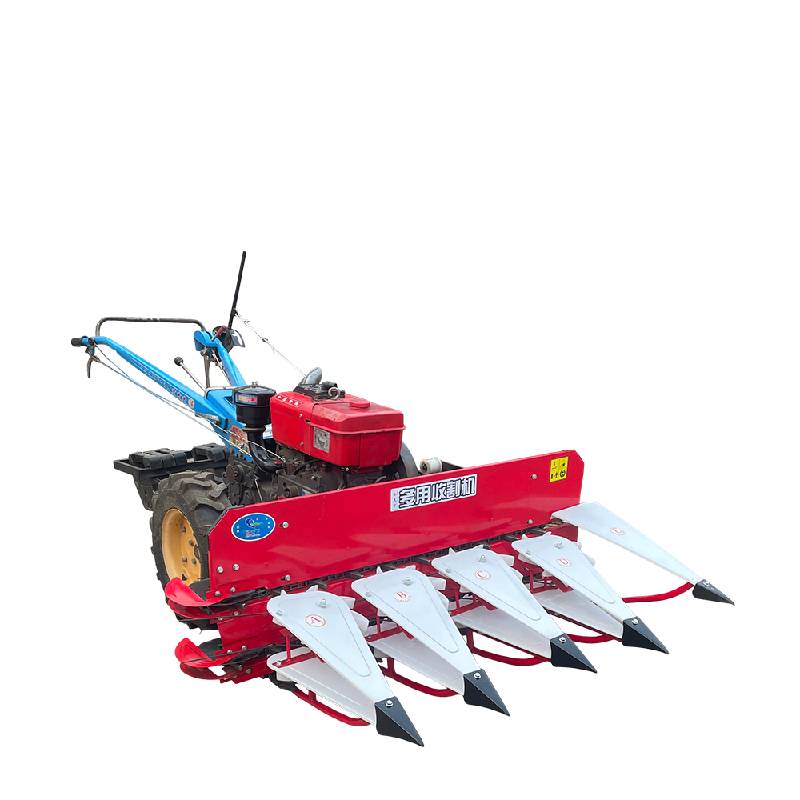High-Efficiency Reaper Binder | Fast, Clean Harvests
Walking Tractor Mounted Reaper Head: Field Notes, Specs, and Buying Tips
If you’re eyeing a reaper binder for small grains or lodged rice, you’re not alone. Demand for compact, two-wheel-tractor harvesting kits has been quietly climbing across Asia and Africa. In fact, smallholder co-ops tell me they want something light, fixable with basic tools, and durable enough to survive a muddy late season. The GS120C2 walking tractor cutting head out of Julu Industrial Park, Xingtai, Hebei, fits that brief surprisingly well.

What it is and where it fits
The Walking tractor mounted reaper head (model GS120C2) is a front-mounted cutting unit designed to pair with common two-wheel tractors. Think rice, wheat, barley, oats—narrow terraces, irregular plots, and places a combine just can’t reach. It’s not flashy, but it gets the job done. Many customers say it reduces hired labor headaches during peak harvest weeks.
Quick specifications (field-tested, real-world may vary)
| Model | GS120C2 (Walking tractor cutting head) |
| Cutting width | ≈ 1,200 mm |
| Crop types | Rice, wheat, barley, oats (standing or moderately lodged) |
| Required tractor power | ≈ 6–12 hp two-wheel tractor |
| Cutting height | ~30–120 mm adjustable |
| Knife & guards | Serrated sickle bar, high-carbon/manganese steel; heat-treated |
| Throughput | ~0.2–0.4 ha/h (operator and crop dependent) |
| Weight | around 95–120 kg |
| Origin | Julu Industrial Park, Xingtai, Hebei, China |
Process flow, materials, and testing
Materials: tempered, high-carbon/manganese steel blades; reinforced guards; powder-coated frame. Methods: CNC/laser cutting for knife sections, precision riveting, dynamic balance check on moving assemblies. Testing: safety per ISO 4254-1; warnings per ISO 11684; endurance runs on dry and damp fields.
Internal field trials (Hebei, 2024) on wheat showed ≈0.32 ha/h average capacity, loss rate under 1.5%, and stubble height variance within ±8 mm. Knife hardness held around 48–52 HRC after heat treatment. Service life? With greasing and seasonal blade sharpening, users report 5–7 harvest seasons before major refurb—your terrain and storage conditions matter, of course.
Where it shines
- Small parcels, terraces, and wet paddies where large harvesters can’t fit.
- Rice and wheat windrowing ahead of threshing.
- Labor-constrained harvest windows—seems obvious, yet critical.
Advantages vs. typical reaper binder options
- Simple driveline and guards: easier field fixes, fewer downtime surprises.
- Balanced weight for two-wheel tractors; decent control on uneven plots.
- Parts availability from Hebei suppliers has been, to be honest, better than expected.
Vendor comparison (indicative)
| Vendor | Certs (typical) | Spare parts lead time | Warranty | Customization |
|---|---|---|---|---|
| Hebei manufacturer (GS120C2) | ISO 9001, CE (on request) | ≈ 7–15 days | 12 months | Width, guards, paint |
| Generic import | CE (varies) | ≈ 20–45 days | 6–12 months | Limited |
| Local workshop | — | Immediate/varies | Shop policy | High (fit-and-finish varies) |
Customization and compliance
Common tweaks include alternative crop lifters, stubble deflectors, and paint/branding. Ask for declaration of conformity and user manual aligned with ISO 4254-1 and ISO 11684. If your buyers call it a reaper binder, clarify whether you need mere windrowing or binding functionality; specs and add-ons differ by model and region.
Mini case studies
- Delta rice co-op (SE Asia): replaced manual sickle teams; reported ~30% labor savings and steadier stubble for post-harvest drying.
- Wheat plots (North India): narrow lanes, soft soil; operators liked the manageable nose weight and easy guard replacement mid-season.
Final take
For small, awkward fields, a compact cutting head paired with a two-wheel tractor remains a cost-effective answer. It’s not a full-on combine—nor is it trying to be. As a practical reaper binder-class solution for windrowing cereal crops, the GS120C2 makes a strong, workmanlike case.
Authoritative references
- ISO 4254-1: Agricultural machinery — Safety — Part 1: General requirements. https://www.iso.org/standard/82775.html
- ISO 11684: Tractors and machinery for agriculture and forestry — Safety — General requirements. https://www.iso.org/standard/14360.html
- FAO: Two-wheel tractors for smallholder mechanization (overview). https://www.fao.org/
Latest news
-
Mini Combine Harvester for Paddy – Compact, Efficient Rice Harvesting SolutionsNewsNov.24,2025
-
Mini Chain Harvester: Compact Forestry Solutions for Sustainable LoggingNewsNov.23,2025
-
Kartar Mini Harvester – Compact, Efficient Harvesting Machinery for Small FarmsNewsNov.23,2025
-
Compact Power: Elevate Your Farming with Harvesting Machine SmallNewsNov.22,2025
-
Discover the Power and Potential of Harvester Mini Combine Machines | Efficient Small-Scale HarvestingNewsNov.22,2025
-
Compact Harvester Machines: Small-Scale Agriculture’s Big AdvantageNewsNov.21,2025








